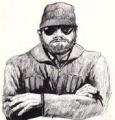Wow.No one else here can say that. Or would.We exacerbated our problems by incompetence at high levels in uniform and showed the result of 25 years of poor training..Then we exacerbated our problems by confused and conflicting after action orders.War is not frightening to those who are prepared for it. It will be for those who want to fight nicely.However, a real war would be really messy and possibly "frightening".Democracies in peacetime do not do good intel -- or adequately train their military forces; Legislators and Mommies get upset. I can accept that for the benefits of the system....we don't start acting properly with indepth intelligence that may not be politically correct.The Mk262 (I guess that's the one you're referring to) has a 77 grain bullet; the new one has a 70 grain bullet. Barrel change either way but that's okay because we don't teach people how to clean weapons well so barrels get excessive wear from over maintenance.The M262 requires a 1 in 8 spin optimally. Not to say the M262 is the optimum cartridge.There are some new ones in the works.I'll bite my toungue and say that the M72 PI would also be a good addition to the squad/platoon mix...True, that's why the M16 as purely political for the initial purchase is pretty sad.Agreed! But when we try to fit weapons that don't fit their supposed mission then the "feet on the ground" suffers.The Viet Namese Airborne Brigade had a number of purchased AR-15s; 15 to 20 per Rifle Company. If a troop carrying one got hit, they'd get five men killed to get that weapon back. We got some 'to be scrapped' M-60s to use in lieu of the BARs -- bear to scrounge Ammo for 'em. The little guys loved the Pig as well.My opposite number on one of my rotations was so disgusted with the M1 carbine that he cried when I got him a M16.















Bookmarks